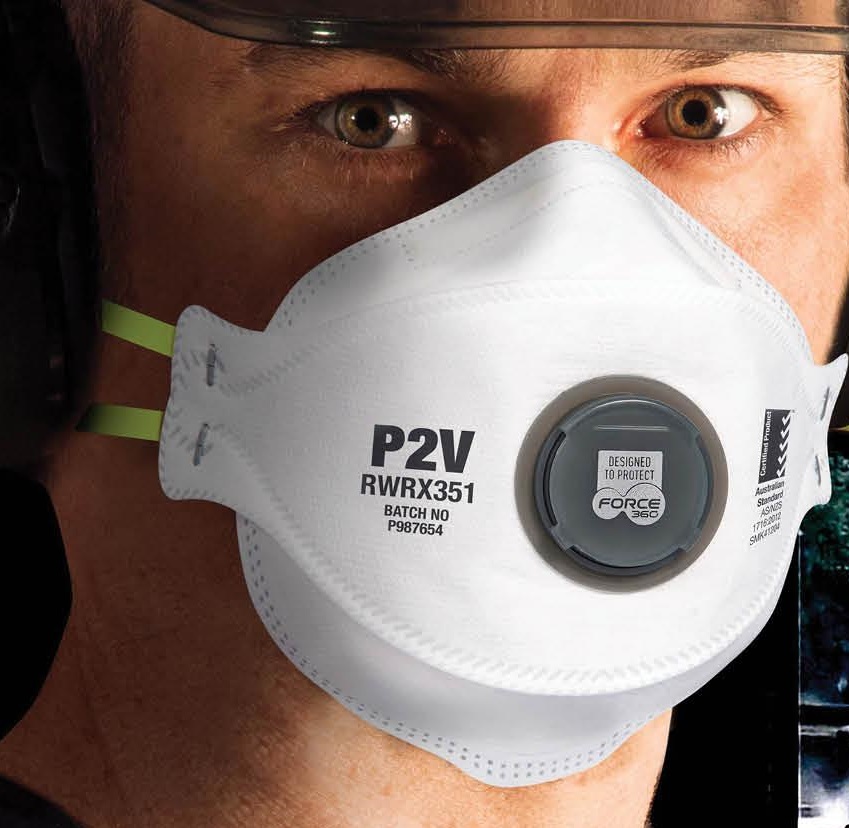 The COVID-19 pandemic sparked a surge in the use of respiratory masks, leading to an increased awareness of the importance of respiratory protection. With an array of respiratory masks available in the market, selecting the most appropriate type of respiratory protection can be challenging.
The COVID-19 pandemic sparked a surge in the use of respiratory masks, leading to an increased awareness of the importance of respiratory protection. With an array of respiratory masks available in the market, selecting the most appropriate type of respiratory protection can be challenging.
Among these options are disposable and reusable respirators. Choosing the proper respiratory mask depends on several factors, such as intended use, comfort, durability, cost, environmental impact, and task-specific regulations and standards. The differences between disposable and reusable respirators, include their features, benefits, drawbacks, and environmental impact.
It’s important to understand the differences between each respirator to help you make an informed decision when selecting the appropriate PPE.
How Does A Respirator Work?
Harmful airborne particles, gases and vapours are present in the air and are not visible to the human eye. Respiratory masks are designed to protect the individual from inhaling these harmful particles. They operate by creating a protective barrier between the mouth and nose and its surrounding environment, filtering out the harmful particles that may be present in the air.
A diverse range of masks is available on the market, varying in materials used, features, sizes and level of protection. Some of the most common respiratory types include surgical masks, P2 or N95 respirators, half-face respirators and full-face respirators.
These are commonly used in healthcare facilities, industrial settings and other instances where individuals may inhale dangerous pollutants.
How Do Disposable Respirators Differ From Reusable Respirators?
The availability of disposable and reusable face masks allows others to have the option of selecting the most appropriate type of respiratory protection based on their specific requirements and circumstances. Choosing the proper respiratory mask requires the consideration of several factors, such as intended use, comfort, durability, cost, environmental impact and, most importantly, task-specific regulations and standards in specific situations.
DISPOSABLE RESPIRATORS
As the name indicates, disposable respiratory refers to a single-use respirator designed to be discarded after one single use. Disposable respirators are often used in healthcare facilities, construction sites, factories, laboratories, and other environments where individuals can inhale airborne contaminants and hazardous materials.
They are commonly made using lightweight non-woven fabric or paper and are typically less durable than reusable respirators.
Disposable respirators are widely accessible and are easily purchased. They are convenient as they do not require any cleaning before usage and are ready to use. They offer a high level of protection against hazardous contaminants and infectious diseases, even with their compact, lightweight size.
However, disposable respirators have a limited lifespan and need to be replaced frequently, which can be costly and could generate waste that can negatively impact the environment. Depending on their fit or design, some users may find disposable respirators uncomfortable, which can hinder individuals from using them.
REUSABLE RESPIRATORS
Reusable respirators are frequently used for painting, woodworking, or welding, where hazardous fumes and particles are present. They are also used in situations with high pollution levels or poor air quality, such as a bushfire or a house fire. They generally offer a higher level of protection due to their rugged design and the availability of filters used for various environments.
They typically come in a full-face or half-face design with more robust, durable materials such as silicone, neoprene or TPE (thermoplastic elastomer). Reusable respirators, however, are designed to be used multiple times as they can be washed or sanitised in between uses.
Since they are reusable, they are more cost-effective than disposable respirators. This also means they are more sustainable and environmentally friendly as they generate less waste.
Their robust, durable design also means they can have a longer lifespan. Reusable respirators tend to be more comfortable as they have specific features such as adjustable straps and softer materials.
In contrast, reusable respirators tend to be heavier than disposable respirators, which can cause discomfort for some individuals due to their bulkier size. Reusable respirators can be more time-consuming and may require additional equipment and supplies for maintenance.
They are less convenient as it involves cleaning before and after use, which means that they are not readily available as opposed to disposable respirators. Reusable respirators also cost more than disposables, which may hinder some users.
The Importance of Respiratory Protection
Respirators have become a piece of essential protective equipment in recent years. The increased awareness of the importance of respiratory protection has allowed these tools to become readily available. Using disposable or reusable respirators is critical in protecting individuals and communities from hazardous contaminants and infectious diseases found in the air.
The choice between a disposable respirator and a reusable one depends entirely on the level of protection required, the frequency of use, the type of work and the cost. It is crucial that each option is carefully examined and that a risk assessment is carried out in a specific setting to select the appropriate personal protective equipment.





